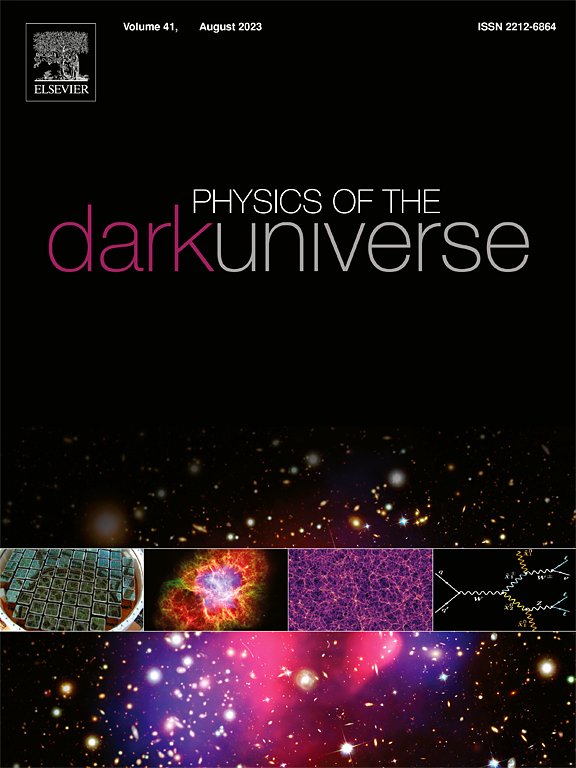Probing dark energy properties with Barrow Holographic Model in f(Q,C) gravity
IF 5
2区 物理与天体物理
Q1 ASTRONOMY & ASTROPHYSICS
引用次数: 0
Abstract
Understanding the accelerating expansion of the universe remains one of the foremost challenges in modern cosmology. This study investigates Barrow Holographic Dark Energy (BHDE), a model inspired by quantum gravitational corrections, within the framework of gravity. This extension of symmetric teleparallel gravity incorporates the non-metricity scalar and the boundary term , enabling a deeper exploration of cosmic dynamics without relying on a cosmological constant or exotic matter. The BHDE model is analyzed under a flat Friedmann–Robertson–Walker (FRW) metric, focusing on key cosmological parameters such as energy density, isotropic pressure, the equation of state (EoS) parameter, stability conditions and the energy conditions. The results demonstrate that the EoS parameter transitions from matter-like behavior () to negative values at , indicating the dominance of dark energy and its role in the universe’s accelerated expansion. As approaches , the EoS parameter asymptotically converges to , aligning with the CDM model. This work underscores the potential of the BHDE model in gravity as a comprehensive framework for studying cosmic acceleration. By incorporating Barrow entropy and addressing the interplay between non-metricity and boundary terms, the model provides a dynamic approach to explaining dark energy. Its predictions align well with observational datasets, including Type Ia supernovae, cosmic microwave background (CMB) radiation, and baryon acoustic oscillations (BAO). Future investigations could refine the constraints on free parameters and explore deeper connections between quantum gravitational effects and the observed behavior of dark energy. Overall, the BHDE model within gravity offers a robust alternative to static dark energy models, capturing the universe’s complex evolution from the past to the distant future.
求助全文
约1分钟内获得全文
求助全文
来源期刊

Physics of the Dark Universe
ASTRONOMY & ASTROPHYSICS-
CiteScore
9.60
自引率
7.30%
发文量
118
审稿时长
61 days
期刊介绍:
Physics of the Dark Universe is an innovative online-only journal that offers rapid publication of peer-reviewed, original research articles considered of high scientific impact.
The journal is focused on the understanding of Dark Matter, Dark Energy, Early Universe, gravitational waves and neutrinos, covering all theoretical, experimental and phenomenological aspects.
 求助内容:
求助内容: 应助结果提醒方式:
应助结果提醒方式:


